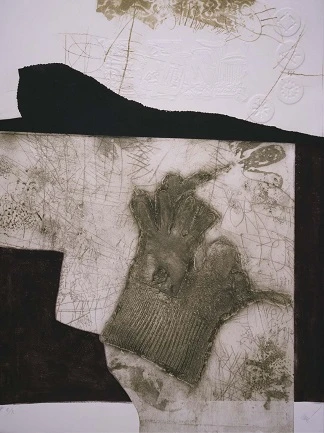Antoni Clavé en las colecciones del MNCARS. 50 años de obra gráfica

This exhibition brings together a selection of over one hundred and eighty engravings, preserved in the Museo Nacional Centro de Arte Reina Sofía, that span the fifty years of his graphic artwork, with the oldest dating back to 1941, the year Clavé produces his first lithographs. The work exhibited here stands out for two key reasons: themes and techniques.
Clavé, greatly inspired by general art history and the ins and outs of engravings, constantly pays homage by making Alberto Durero, Doménikos Theotokopoulos “El Greco” and Francisco de Goya recurring motifs in his work, as highlighted in El caballero de… (the series “hommage a Domenikos Theotokopoulos”) (1964), and from which he develops multiple versions of the hand and glove theme, as seen in Encore le gant (1970) and Le gant de Madison Avenue (1974).
Clavé starts out with traditional techniques: lithography (1941) and etchings (1964), though he is recognised within the Spanish graphic arts scene for his inclination towards experimentation and innovation as he stretches the limits of engravings via the use of the carborundum technique (1968) -involving the addition of liquid substances, resins and powders from a range of materials to the engraving and embossing plates, leaving them with a relief containing diverse materials and objects, or via offset printing on an aluminium plate (1972). These techniques allow him to delve deeper into more abstract languages and make the resulting pieces more complex in terms of subject matter.
Moreover, the art critic and historian, Francesc Miralles, acknowledges the impact of his second trip to Japan (1986) as Clavé's work takes on the aesthetic and artistic idiosyncrasies from this particular country. This points to the trend towards the vertical interpretation of the engraving and the inclusion of red seals to sign off his work, like a poet and collector, and, more tellingly, the particular assessment and relativization of the backgrounds.
Organised by
Museo Nacional Centro de Arte Reina Sofía
Image gallery
